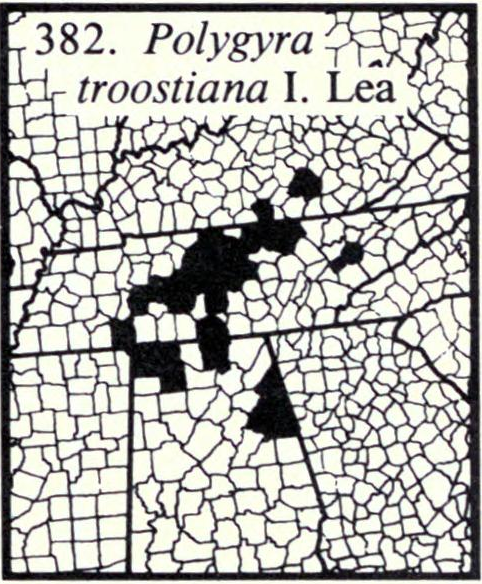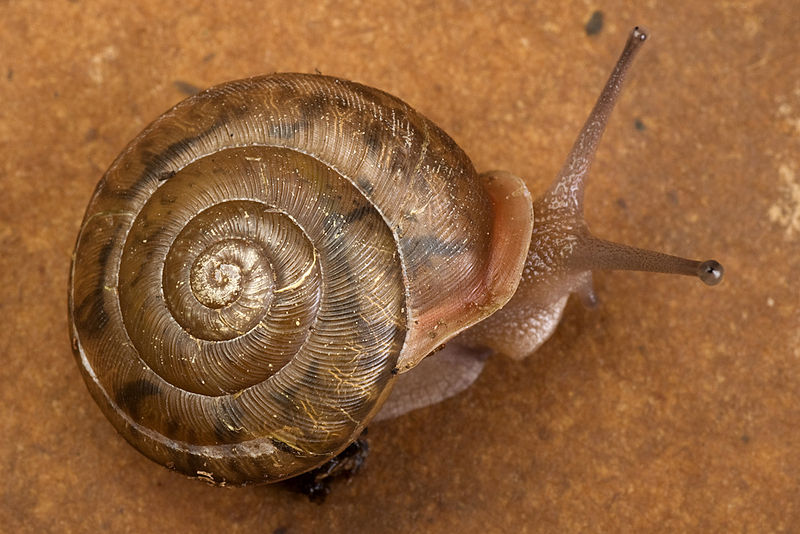Habitat

Millerelix troostiana has the common name Nashville Liptooth (EOL.org). It is named after Nashville, Tennessee because it is found mainly in Tennessee at the base of the Appalachian Mountains (Hubricht, 1985). The picture of the distribution of Millerelix troostiana below shows the very specific area in which this specific snail lives (the shaded counties.)
Some of the shaded counties of Tennessee are Sumner, Wilson, and Davidson; all of which are part of the Central Basin (Safford, 1869). In fact, almost all of the shaded regions are found within the Central Basin. The Central Basin is an area of land dipping in the middle, surrounded by tall ridges that separate it from the rest of the state (Safford, 1869). This may help explain the isolation of the species.

Millerelix troostiana is a calciphile (Hubricht, 1985), meaning that it needs a lot of calcium carbonate to survive (Gardenweb.com). This calcium is needed for shell production (Hickman et al., 2012). According to the USGS, the Central Basin of Tennessee has many streams and rivers within the basin with high calcium, and calcium bicarbonate concentrations (Bradley, 1985). These high concentrations are from the underlying bedrock of limestone (Bradley, 1985) and create a perfect environment for Millerelix troostiana.
According to Hubricht, Nashville Liptooth snails thrive in organic matter on the ground in cedar glades (1985). This is another example of how the Central Basin is a perfect home for the snails, because it in fact occupied by said cedar glades (Safford, 1869). The area occupied by Millerelix troostiana may seem small relative to the rest of the world, but the Central Basin provides it with the exact nutrition it needs.
From Habitat, let's move on to Nutrition
